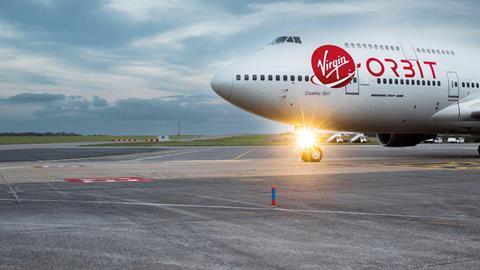Despite the technical issues that beset Virgin Orbit’s attempted satellite launch from Newquay Airport, the evolution of the UK’s space regulation is a silent success story and a model for how to carefully align enabling laws with a rapidly evolving industry.

The first space launch from the UK, on 9 January, saw Virgin Orbit fly its LauncherOne vehicle using a modified Boeing 747 as an aerial platform from Newquay’s Space Cornwall facility. The aim was to launch its payload of satellites into low Earth orbit. Unfortunately, a technical problem meant that the satellites were not launched.
While the space engineers involved will be analysing what went wrong, it is useful to reflect on how the launch itself was only possible because of a raft of new laws, which largely came into force in 2021. The Space Industry Act 2018, with its associated Space Industry Regulations 2021, regulate all spaceflight activities carried out in the UK. Together they follow years of consultation, conducted alongside the National Space Strategy 2021, which itself served as a catalyst for government and private sector collaboration in the space ecosystem. These laws have liberated commercial space activity in the UK.
To conduct even a horizontal launch of the kind attempted in Cornwall required compliance with these regulations. These largely provide for a series of operational licences governing each component of the mission. The flight needed a launch operator licence, an orbital operator licence, a licence for range control services, a spaceport licence, and likely, adherence to regulations governing technology transfer from the US. Each participant in the effort had to meet stringent compliance obligations to ensure safety and environmental considerations were addressed. The Civil Aviation Authority (CAA), through its new Safety and Airspace Regulation Group, is the regulator.
Behind the scenes there will have been extensive and coordinated work and dialogue between Virgin Orbit, the satellite operators, and Spaceport Newquay to ensure the inaugural launch was delivered in compliance with the new laws.
We should applaud the speed at which the regulatory landscape has been implemented in support of the commercial investment being made. Law is often seen as a barrier to entrepreneurship – with inherently high-risk endeavours such as the Cornwall launch, the law obviously must ensure safety – but it must also serve to facilitate. This is what the new law achieves.
A review of the new licensing regime reveals a carefully considered procedure which starts with a voluntary pre-application engagement. Prospective applicants for licences are encouraged to engage with the CAA before submitting an application for a licence under the act, followed by the application itself, comprehensive monitoring of the mission profile, and finally enforcement.
The significance of the first launch attempt cannot be overstated. Although there were technical problems, clearly Spaceport Cornwall discharged its obligations and has demonstrated it knows how to launch a space mission. It paves the way for many more, both from Virgin Orbit and a variety of other launch providers, which may include the American Dreamchaser vehicle (which would itself require another form of licence governing return of craft to the UK if launched from another state).
Newquay’s status is augmented by the vertical launch facility being developed at the SaxaVord Spaceport in Unst, Shetland. They each will make possible lower-cost access to space and the orbital parameters available to a UK launch. Our participation in space activity will become meaningful beyond an already very successful satellite manufacturing competence. It facilitates end-to-end delivery, from mission concept, through manufacture, and ultimately domestic launch availability.
The launch also draws attention to the downstream players in the emerging commercial space sector in the UK. As access to space is more easily secured, the potential for new technologies and businesses engaged both in subsystem development and non-space activity is enhanced.
It is going to be vital to break down the perceived barriers among current non-space-orientated businesses, to space technology, and in turn enlarge the emerging new space industry in coming years. Therein lies a challenge. Historically, space activity has not been considered economically feasible for many, and the two worlds of the space sector and wider non-space-orientated technology development have operated in respective silos.
If the wall can be dismantled, there is opportunity for a new age of innovation. When different disciplines collide, technological advancement can grow exponentially. For example, we are witnessing the dual competence of artificial intelligence and commercial space. It is this confluence of the revolutions which will power the UK’s drive for increased market share in the space industry.
It is clear a great deal of work has gone into Virgin Orbit’s first UK flight, but beneath that is an example of active cooperation between the regulators and operators which signals a new era for the UK.
Technology has to be applied to be of value, and to commercialise it, the arrival of a new platform in the form of domestic space launch competence can only make that objective more easily attainable.
It is a dynamic example of how the law can promote innovation and not simply inhibit.
Andrew Sparrow is a commercial space partner at Spencer West, London
































No comments yet